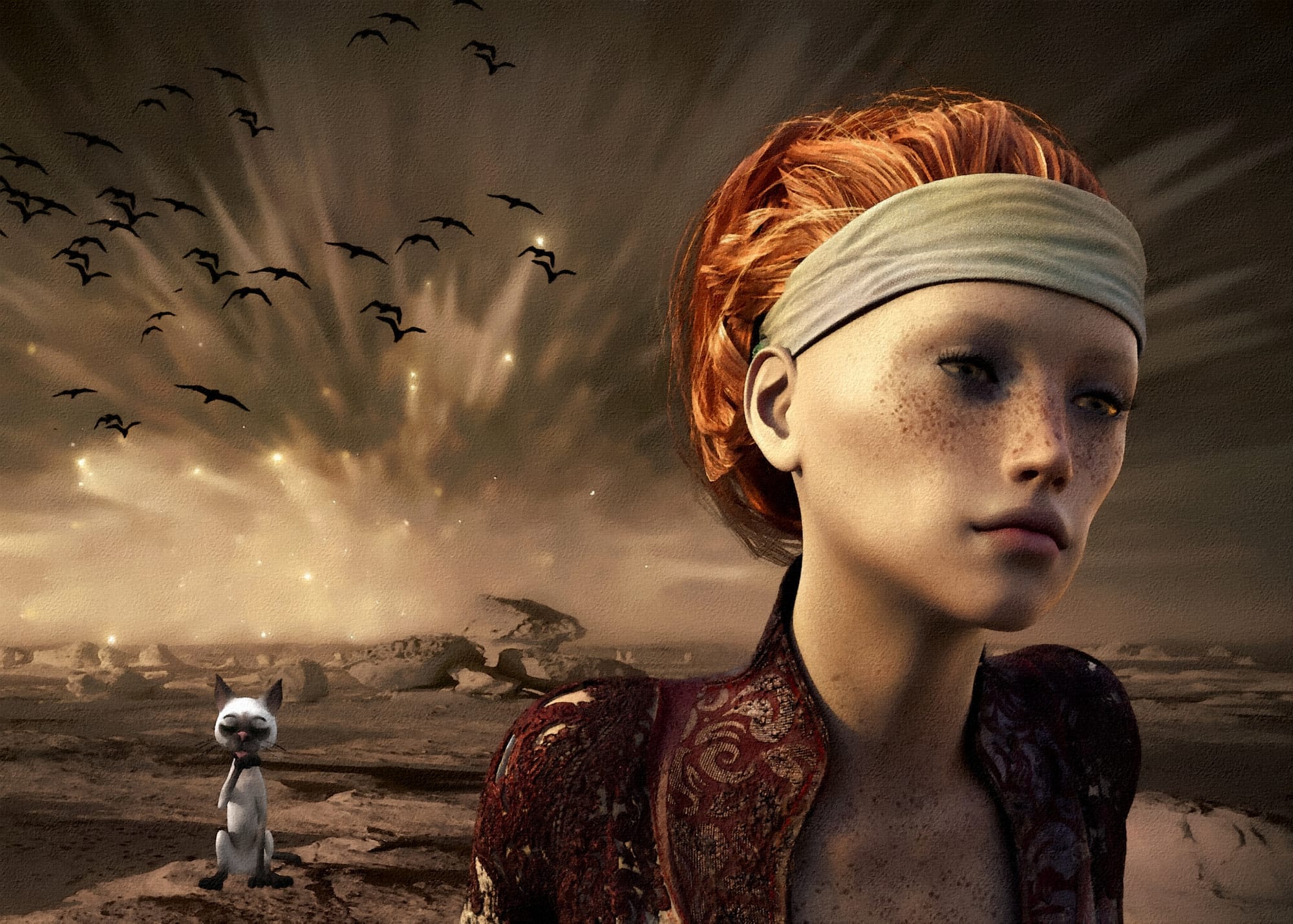Not Waiting for a Savior: The Damsel vs. the Firestarter
A look at the myths we outgrow—and the ones we rewrite. When the world demands obedience, the firestarter offers a different ending.

The Damsel in Distress: A Flawed But Familiar Icon
I cut my teeth on the bodice-ripping romance novels of the 1980s and early ’90s—Fabio’s lion-mane hair graced the covers, and throbbing man roots tangled with weeping flowers were between them. Those books—and the wonderful women trailblazers who penned them—shaped who I am as a person and the kind of writer I’ve become.
Though those stories featured many independent women, much of the heroine’s behavior still fell into the Damsel in Distress trope.
Why Romance Needs Complicated Women
Historically, romance heroines were asked to be three things: likeable, relatable, and fixable. Ideally all three—preferably with great hair and just enough sass to keep things quirky.
Likeable is a moving target at best, and mostly useless. In practice, it’s usually code for don’t make readers uncomfortable. Don’t be too beautiful, too plain, too ambitious, too cold, too warm. Be someone everyone can root for, but don’t make them work for it. And for godsake, don’t challenge them.
Then there’s relatable, which gets misused almost as much. Relatability isn’t about personality quirks or psycho ex-boyfriends. It’s about emotion and the shared human experience.
You relate to a character because they’re grieving. Or because they’re furious or because they want something so badly it hurts. You relate because they break under pressure—or don’t—and you remember exactly what that felt like.
And yet, somehow, we’ve been trained to believe that female characters showing too much anger, too much pain, too much mess makes them unrelatable. But soul-sucking grief and bone-deep rage? Those are human. And they’re also deeply feminine—not because women are overly emotional (we’re not), but because we live in a world that constantly demands our silence. That demand builds pressure. And rage is the natural byproduct of being told to shrink yourself one too many times. Fury is survival. Messiness isn’t a flaw—it’s evidence that a woman has lived and hurt and kept going, anyway.
The Damsel Revisited
These days, the damsel gets a bad rap—and maybe she doesn’t entirely deserve it. There’s something classic, even mythic, about her. She’s the heroine dangling from the tower, the princess in the dragon’s clutch, the woman whose value is so absolute that the entire plot orbits around saving her.
In the best versions of this trope, she reminds us that vulnerability is a prerequisite for courage. That needing help isn’t weakness. That the people we love are worth fighting for. But here’s the problem: it’s never her doing the saving. She gets to look beautiful and terrified while the story hurls itself into action around her. Her job is to wait—passively, gracefully, eternally—until the right man, sword, or emotionally repressed vampire kicks down the door.
And that, my friends, is where I tap out. Because for all its fairytale sparkle, the damsel trope has teeth—and not the fun kind. Often, it implies that being rescued is the highest arc a woman can hope for. That love is something that happens to her, not something she actively shapes. The most interesting thing about her is the hole her absence leaves in a man’s life. I don’t write heroines like that. I’m not capable.
Enter Keela: My Firestarter Heroine
She was biologically engineered to kill, to obey, to be the perfect grenade in someone else’s hand. Instead, she was born with a conscience—a defect, according to her creators. They tried to fix her. When they couldn’t, they tried to kill her.
Keela doesn’t wait for Shale to show up and do the rescuing—she lights the fuse herself. She doesn’t ask for permission, and she definitely doesn’t apologize for her dangerousness. She’s rage with a pulse. But she carries mercy like she does her blade—sparingly and never blindly. And when she falls in love—which she does, inconveniently—it’s not simply her vulnerability that makes her compelling. It’s that someone finally sees the full weight of her fire and chooses to stand beside it, not snuff it out. That’s the kind of heroine who sets a story on fire. Literally, sometimes.
Resilience Without the Makeover Montage
In many modern romance novels, especially those published by traditional houses, there’s a certain kind of female character who is labeled “strong”—and she usually comes with a three-act redemption arc and a few carefully placed quirks. She’s fierce, but not too fierce. Wounded, but in a pretty way. She’s allowed to struggle, but only if she gets over it quickly and learns to smile again before chapter ten. That’s not strength. That’s polish.
Real resilience isn’t tidy. It doesn’t come prepackaged with a makeover montage and a personality shift. Resilience is ugly. It’s slow. It’s earned. And when a woman claws her way toward healing or power or self-worth, one brutal moment at a time, the result isn’t just strength—it’s honesty.
Resilience born from struggle doesn’t erase the damage; it weaves the pain into the story. The reader sees the scar, not just the smile. There’s room for grit and defiance. The heroine survives without pretending that survival hasn’t cost her something. And that kind of emotional honesty? That’s where the good stuff lives. That’s what makes readers sit up and say, “Yes. I’ve been there.” Not because they’ve killed someone with their mind, but because they’ve felt hollowed out and furious—and still got out of bed the next day anyway.
In my stories, resilience doesn’t mean enduring quietly. It means getting loud. It means refusing to stay palatable. Sometimes the only way out is through the fire—and lighting the match yourself.
The Firestarter’s Love Story
If you haven’t guessed the punchline by now, I’ll spoon feed it to you: Women don’t become strong by being saved. They become strong by surviving what tried to break them.
When we write romance without the full spectrum of emotion, we flatten the woman at its heart. She becomes a placeholder, not a person. But when we let her be angry, scared, bitter, proud, grieving, reckless, and raw—and still worthy of love—we tell a deeper truth: Love doesn’t require polish. True love and belonging asks only that you be real.
And personally? I’d much rather follow a complicated woman into a messy love story than watch another perfect one get saved.


